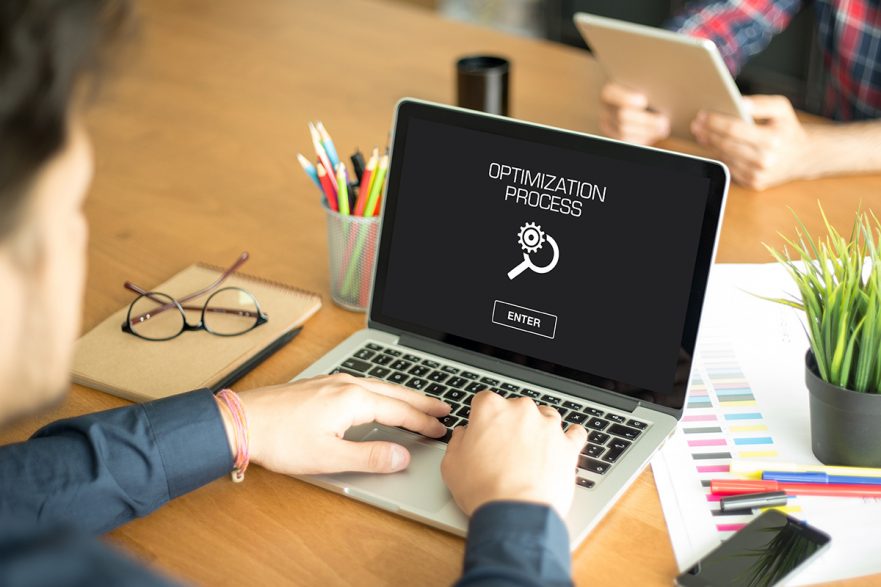I’m always surprised at how we as people perceive digital matters; still as a parallel logic of the physical world. Something that is absolutely logical for us and we strive for in the physical world, can be viewed completely differently when it comes to its digital form. We aren’t yet at the stage where we combine the physical and digital into a single reality. We’ll probably need another decade for that. Digital naturals take the lead in the business world. Sorry.
Every serious company needs to have a website
I remember the times when the business world was convinced that every company had to have its own website. If you didn’t, you were seen as living in the Stone Age. Mostly, this was the only purpose of the websites at that time; apart from contact details, you couldn’t really find any useful. Companies viewed their websites as a technical product, something that IT took care of. Today, when I look back 15-20 years, I really can’t understand the point of this thinking anymore. At the time though, I did. 😊
If Google can’t find you, you don’t exist
About 10 years later, companies began to think about who actually visits their site and what are they looking for (the purpose of searching is still something that a lot of people today still aren’t considering). Let’s say that this second period of online presence was marked by engaging in website visits. This period is characterised by the phenomenon of advertising for website visits, so-called website optimisation. In addition to the people who created websites, SEO engineers (Search Engine Optimisation) appeared at this time; selling businesses the highest spots on Google.
If it was imperative to have a website during the first period of the website revolution, then in this second period, the key metric is website visits.
In this second development phase of the online presence, most companies got stuck, unfortunately also many providers who took care of online presence too. If companies managed to expand their digital presence to social networks, the mentality remained largely unchanged.
Customers changed their shopping habits
With the arrival of Hubspot (FrodX is an official Hubspot partner and offers the implementation of Hubspot software solutions) and the “inbound marketing” paradigm, some companies have redefined the significance of their digital presence; for the first time companies are thinking a lot more analytically about the purpose of their digital presence and the purpose of the content that their visitors seek. For the first time, digital presence has become a customer support service.
The essential realisation that some companies have reached is that the purchasing process of their customers and sales process of vendors are spanned across a considerable amount of time. Vendors have lost the opportunity to educate their customers who now educate themselves using digitally accessible content. Vendors have become merely the closers of the sale. Sales performance can be directly linked to the activities of each customer in the digital environment; also in activities where there is a long purchasing process, and even if the final purchase decision is made in the physical world.
This period is also marked by the recognition that advertising without conversion on the page is of little use. That SEO is no longer primarily a technical discipline and that well-thought-out and top-notch content for each stakeholder in the purchasing process is a key factor for success. And that is all very difficult to coordinate without adequate IT support. At least if we want to link digital effort to sales activities and have everything under control.
If you knew what kind of business relationship you had with a particular visitor on your page, would you still be showing the same content to everyone?
I wouldn’t. Make sure that the site offers everyone relevant content to the visitor. Managing dynamic content on a website tailored to each individual visitor is no longer considered rocket science. Additionally, if you don’t (yet) use any of the marketing automation platforms (Hubspot, SAP Marketing Cloud, Net-Results).
Today, for me personally, managing dynamic website content without logging into the website itself (simply by reading cookies) is the optimisation of web pages 2.0. Not necessarily solely in the light of the CRO – Conversion Rate Optimization. Often much more in the light of better visitor management experience. I believe, the latter is becoming a key trend. We came to the realisation that customers do not separate the physical and digital experience of the provider. There was only one experience left for them. The first touches are purely digital … more importantly, most people who don’t become your customers only experience your digital environment. I think this is the starting point for reflection on whether it’s really the most important thing for how many people visit your digital backyard or whether it may have become more significant what they experience when in your backyard…




